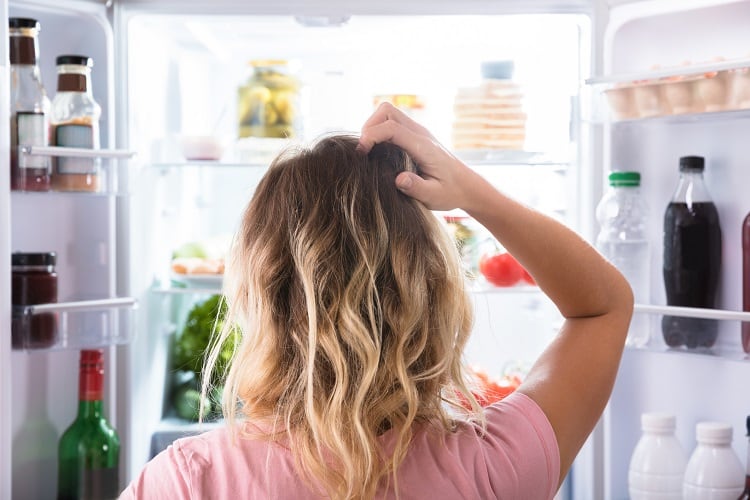Industry associations and organizations laud a joint effort by FDA, HHS and USDA to develop a clear, uniform definition of ultra-processed foods, but caution that the final verdict should be rooted in science, nutrition and health outcomes, as opposed to the current processing-focused NOVA classification system.
HHS, USDA and FDA announced a request for information (RFI) to compile information and data to develop a standardized definition of ultra-processed foods (UPFs) to provide more transparency for consumers.
The agencies’ coordinated efforts are seeking “common-sense ways” to improve healthy choices among consumers, according to USDA Secretary Brooke Rollins.
The RFI seeks information and criteria on UPF’s defining factors and is publicly available beginning July 25 on the federal register at https://www.federalregister.gov/public-inspection/2025-14089/request-for-information-ultra-processed-foods. Comments must be submitted 60 days after date of publication in the federal register.
HHS, FDA & USDA: UPFs are driving chronic illnesses
UPFs, which federal agencies estimate are found in 70% of packaged foods in the US, are “driving the chronic disease epidemic” – a key force behind food and health reform efforts under the Make America Healthy Again (MAHA) initiative, said HHS Secretary Robert Kennedy Jr, who is leading the campaign.
A uniform definition would guide implementation of the recently published Make Our Children Healthy Again Assessment, which argues that overconsumption of ultra-processed foods is one of the driving factors of the childhood chronic disease crisis,” per the agencies.
While “dozens of scientific studies” claim correlations between UPFs and health outcomes – including cardiovascular disease, Type 2 diabetes, cancer, obesity and neurological disorders – federal efforts plan to invest in “high-quality research” to “help answer remaining questions” linking health impacts and UPFs via the recent Nutrition Regulatory Science Program, per the agencies’ statement.
UPFs are currently characterized in the international NOVA classification system as convenient foods formulated with multiple ingredients (i.e. additives), created to increase palatability and have a long shelf-life.
Industry response: Focus on nutrition and science, not processing
The International Food & Beverage Alliance (IFBA), comprised of seven multinational member companies, including The Coca-Cola Company and Ferrero, supports the “attempts to develop better definitions” of UPFs that will help consumers make informed dietary choices, but cautions against defining UPFs based on degree or processing type as NOVA does, explained Rocco Renaldi, secretary general of IFBA.
“Processing is not inherently indicative of a food’s nutritional value. Many processed products, such as fortified cereals and shelf-stable dairy alternatives, play an important role in advancing global nutrition and food security,” said Renaldi.
Instead of relying on the NOVA classification, which “is not one that is grounded in science,” IFBA encouraged the agencies to define UPFs from a scientific, nutritional and health to perspective to ensure consumer safety and trust, Renaldi added.
“Definitions that overlook these factors or rely on subjective criteria, like packaging or ingredient complexity, risk misleading consumers, eroding trust in food systems and fragmenting regulatory environments across markets,” elaborated Renaldi.
Defining a broad category like UPFs should be based on “objective, peer-reviewed science” rather than its processing method or type, echoed Sarah Gallo, SVP of product policy, Consumer Brands Association.
“Classifying foods as unhealthy simply because they are processed, or demonizing food by ignoring its full nutrient content, misleads consumers and exacerbates health disparities,” said Gallo.
She added: “Before going into schools or on grocery store shelves, products and their ingredients must meet rigorous science and risk-based safety standards.”
Non-UPF Verified: ‘We’re not waiting for regulation to catch up’
There is growing momentum to address UPFs at the national level and a federal effort to develop a standard definition is welcome, said Megan Westgate, founder of the new Non-UPF Verified initiative and the Non-GMO Project.
Similar to Non-GMO Project, Non-UPF Verified is a voluntary program and currently undergoing a pilot program with 16 food and beverage brands.
Non-UPF Verified “parallels” the Non-GMO Project’s work, Westgate said. Although the federal government later implemented a narrow disclosure system under the National Bioengineered Food Disclosure Standard, Non-GMO Project provided a clear, transparent and reliable option much earlier for consumers seeking to avoid GMOs entirely, she said.
Non-UPF Verified’s target is no different in that it is “offering a rigorous, product-level standard that meets the growing demand for alternatives to industrially processed food. We’re not waiting for regulation to catch up – we’re creating a practical solution now for those who are ready to lead,” she elaborated.
Westgate believes that Non-UPF Project shares a similar goal in to FDA and USDA addressing the adverse health outcomes correlated to UPFs, although the verdict is still out on whether the federal definition will include labeling requirements or enforcement.
“Our standard builds from similar foundational concerns – particularly around problematic ingredients – but goes further by also considering processing methods and ingredient function,” she added.
Non-UPF Project’s work complements broader federal efforts to develop a uniform definition for the category, which Westgate said she hopes will reflect “the growing scientific consensus around the risks associated with these products.”
Non-UPF Verified standard goes beyond the NOVA framework, which is “designed for population-level research,” to focus on “product-level evaluation,” Westgate said.
“As a certifier, we are able to go beyond what’s visible on the package and work directly with manufacturers to assess how each product is made. That allows for a deeper, more nuanced level of scrutiny – something we believe is essential for meaningful change in the food system,” she added.
Can a federal definition of UPFs be both clear and nuanced?
One of the challenges in developing a federal definition that improves public health at scale is balancing “clarity, simplicity and enforceability” that will “fully capture the nuance of food processing and formulation,” Westgate cautioned.
While NOVA served as a tool to “advance the conversation,” it misses the mark on product-level application, and a certification process like Non-UPF Verified “can go deeper in collaboration with brands, retailers and ingredient suppliers,” she added.
Consumer transparency tools, like SmartLabel (i.e. QR codes, RFID tags, data-embedded barcodes) and Facts up Front (a voluntary industry-led labeling initiative that puts key nutrition information on the front of packaging), are examples of industry investments in providing shoppers with relevant product and nutrition information, Gallo said.
A standardized regulatory definition for UPFs is welcome, as long as it effectively identifies the most harmful products, according to Eva Greenthal, senior policy scientist, Center for Science in the Public Interest. Some state-level definitions have been overly limited, relying on a short list of additives and failing to include many problematic items, Greenthal explained.
Even before a final UPF definition is in place, the FDA and USDA have opportunities to curb harmful UPF consumption, “such as establishing added sugar reduction targets for industry (similar to FDA’s existing sodium reduction targets) and finalizing front-of-package nutrition labeling,” Greenthal added.




